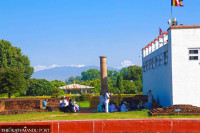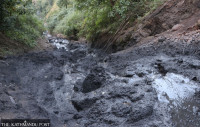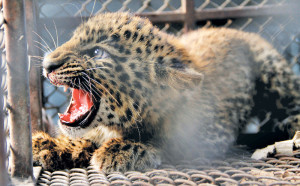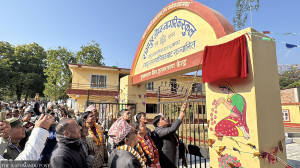Lumbini Province
Motorboat smoke and noise are chasing away Jagadishpur lake birds
Nepal’s key bird sanctuary could lose its Ramsar status if destructive tourism continues.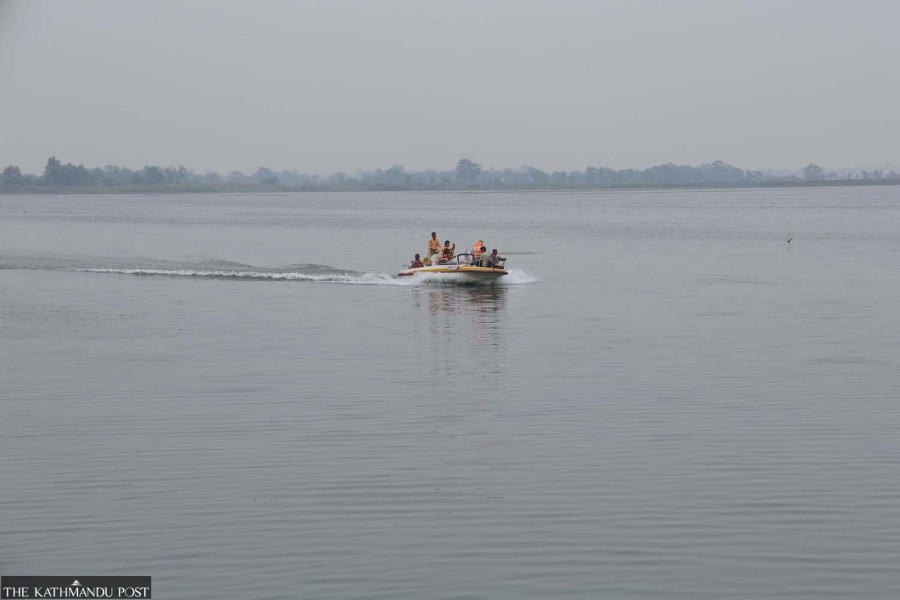
Manoj Paudel
Conservationists have raised serious concerns about the operation of a motorboat in Jagadishpur lake, a Ramsar wetland site of international importance. They warn that the newly introduced 10-seater motorboat is disturbing the habitat of aquatic birds, mammals, and reptiles in the area.
Despite strict provisions prohibiting activities that threaten biodiversity in Ramsar sites, the Jagadishpur Reservoir Management Multi-Stakeholder Forum has awarded a contract to operate the motorboat. Since April 17, the boat has been operating in the western section of the lake.
Last year, the Division Forest Office in Kapilvastu halted a similar attempt to operate the boat, citing environmental concerns. Nevertheless, the forum has gone ahead this year, awarding the contract for Rs855,000 to Binod Pal of Mayadevi Rural Municipality. Though Pal is named as the contractor, sources reveal that several of the forum’s members are unofficial shareholders in the deal.
The boat emits smoke and noise that disturb the lake’s sensitive ecological balance. Conservationists argue that these disturbances particularly affect the aquatic birds and the lake’s rich biodiversity. The forum has designated certain “non-bird” zones for boat operation, but experts say such measures are inadequate.
According to the lake’s official five-year management plan approved by the Division Forest Office, only five pedal boats are permitted—motorboats are explicitly barred. “There is no provision for motorboats in the management plan. We will look into the matter and take necessary action,” said a forest official.
In 2023, the forum purchased the motorboat from Sarlahi for Rs1.35 million. Kapilvastu Municipality contributed Rs500,000 toward the cost, while the remaining amount was paid using revenue from boat operations in previous years.
The contract process itself has been criticised for lacking transparency. While the previous year’s contract was worth Rs1.05 million, this year it dropped to Rs855,000. During the second round of bidding, three parties made offers between Rs851,000 and Rs855,000. The highest bidder bagged the contract. Each ride on the motorboat costs Rs150 per person for a trip of about five minutes.
Previously, in 2021, a complaint was filed at the Commission for the Investigation of Abuse of Authority (CIAA) office in Butwal at the unlawful and non-transparent operation of pedal boats. Though the CIAA ordered a halt in operation of such boats after an investigation, they continue to operate even three years later.
Noted ornithologist Hem Sagar Baral says that the number of water birds has declined sharply over the past four years in Jagadishpur. Once considered Nepal's prime sanctuary for water birds—hosting up to 20,000 birds in 2019-20—only around 8,000 birds were recorded last year.
Baral asserts that human interference from motorboat tourism will result in irreversible damage to the wetland and take a heavy toll on bird populations. The boats disturb the birds, prompting them to flee their habitat.

“Jagadishpur was once a paradise for migratory birds. Today, its natural charm is vanishing in the name of development,” said Baral. He warned that if motorboat operations continue, the site risks being removed from the Ramsar wetland list.
Surprisingly, there has been no official decision authorising the use of motorboats. Even the Jagadishpur Bird Sanctuary Management Committee, which operates under the Division Forest Office, was not informed.
Forum vice-chairman Ramsaware Yadav claimed local demand resulted in the motorboat operation and that the boats are restricted to areas not used by birds.
But ornithologist Hathan Chaudhary says any kind of motorboat operation will erode the site’s natural beauty and ecological value.
Earlier ‘beautification’ attempts have also drawn criticism. A decade ago, the forum tried to install a large Buddha statue in the lake, building a 15-foot-high mud base at the center. Public backlash forced the plan to be dropped.
Yagyamurti Khanal, chief of Lumbini Province Forest Directorate, emphasised that no activity can be carried out in a Ramsar site without an environmental impact assessment (EIA). He said that increased human activity is already affecting the lake’s birds and aquatic mammals.
Professor Karan Bahadur Shah, an expert on reptiles and turtles, pointed out that the vastness of the lake once provided a sense of safety for animals and birds. “Artificial disturbances are making the lake less hospitable,” he said.
Jagadishpur lake, Nepal’s largest man-made wetland, covers around 157 hectares. Initially built for irrigation, it has since become one of the country's top bird-watching destinations. According to a study by the International Union for Conservation of Nature Nepal, the lake hosts 43 species of fish, 10 amphibians, 42 reptiles and 32 mammals.
It is also home to 167 bird species—including 92 local birds, 64 winter migratory birds, nine summer migratory birds, and three partial migratory ones. Rare species like the fishing cat and eight globally threatened bird species have also been recorded here.
Declared a bird sanctuary three years ago under Lumbini province’s Forest Act, the lake attracts migratory birds from Russia, China, Mongolia, the Korean peninsula, Tibet and Central Asia. Located just 11 km north of Taulihawa, the district headquarters of Kapilvastu, Jagadishpur lake is accessible year-round and remains a crucial site to sustain the country’s biodiversity.




 16.12°C Kathmandu
16.12°C Kathmandu



